April 9th, 2022
In an effort to immerse into Japanese culture as much as possible, I've been endeavoring to cook solely Japanese food, and through strictly Japanese methods. All-in-all, the most difficult thing to get the hang of was saibashi (菜箸), long chopsticks used for stirring and flipping ingredients in a pan. They are almost impossible to use with greasy fingers.
In addition to that, I've been utilizing ingredients that I have never bothered with before. Yesterday I made Japanaese style curry using Japan's distinctive skinny eggplants. While curry does not originate from Japan, they have their own special way of making it. Japanese curry is usually not spicy, and is much thicker than the more watery Indian curry. There is never any anise or cardamom in it, and they NEVER use basmati rice. This all results in a curry that is much richer, if less complex in flavor than Indian curry, and certainly less intensely spiced than Thai curry.
In Japan, milk products are expensive because of the lack of farmland to raise cows, so any cheese you put in your sandwich is going to be borderline plastic, but at the very least they make some fantastic bread. Japanese white bread is soft and bouncy, and of all the foods you could compare to America, Japan certainly has us beat in the bread area. Cheap American white bread is soggy, tasteless and worthless. That said, one should never eat white bread in any context, but if they're going to make it, at least make it right, I say.
oh, and I can't forget about my new favorite, which is tamago kake gohan (卵かけご飯), which is where you cook fresh rice, and then crack a room temp egg into the hot rice in order to both cook the agg and cool down the rice. Afterwards you incorporate some soy sauce. It's an easy-to-assemble and filling breakfast that can be made for under 50 yen.
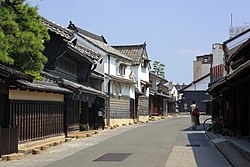
~~~~~~~~~~~~~~~~~~~~~~~~~~~~~~~~~~~~~~~~~~~~~~~~~~~~
March 22nd, 2022
All this talk about borders and lines and such is completely useless without first understanding the sheer scale of Japan. Not how big it is, mind, but rather how dense.
A comparison that is often made when discussing Japan’s size is that it's about the size of California, if a bit smaller. California, however, does not have the most populous city on the planet. The weakness of this comparison is that it doesn't factor in the sheer volume of people living in any given Japanese metropolis, most notably in Tokyo, and how these statistics often dwarf the majority of US states.
Just as an example, that city I mentioned yesterday, Nagoya, has a larger population than the entire state of Nebraska, despite only being 1/1,000th the size. If that doesn’t put things in Japan a bit closer together, consider also that just about anything in Japan can be reached by public transportation.
So, when I discuss this prefecture or that prefecture, keep in mind that I am often discussing an area the size of Rhode Island. Given this, one would assume Japan has somewhat of a homogeneous culture. While this is true ethnically, the different regions of Japan function quite differently from each other (culturally) in surprising ways. As an anecdote, I was recently informed of an anime series coming out which takes place in Aomori prefecture (up north), to which the dialect of the voice actors is so distinct from Tokyo Japanese that subtitles are required even for native Japanese people in other regions to understand the dialogue!
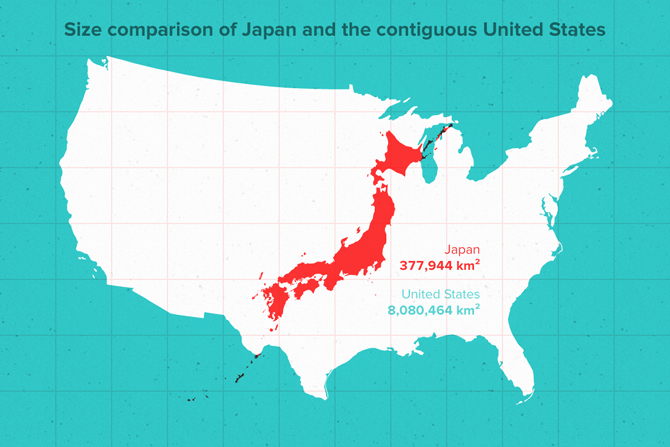
~~~~~~~~~~~~~~~~~~~~~~~~~~~~~~~~~~~~~~~~~~~~~~~~~~~~~~~~~~~~~~~~
March 21st, 2022
Dividing prefectures even further, one finds that they are composed of designated cities, towns and even villages. Below is a map of Aichi prefecture, home of the third-largest city in Japan. Each section seen on this map can be thought of as similar to a county in America, with each city, town or village having its own governing body, which has some autonomy from the larger prefectural government in some ways.
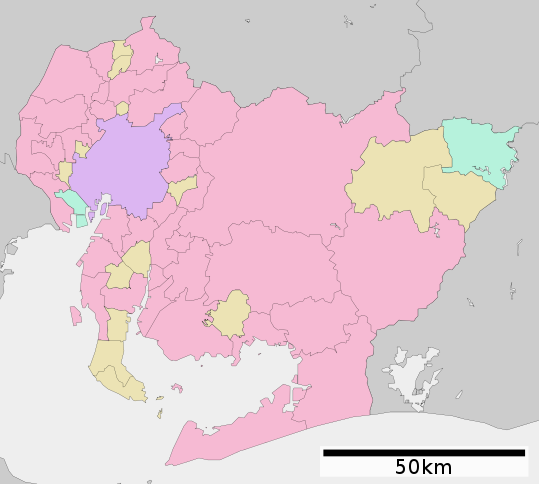
Some cities are large enough that they must be administratively sub-divided into wards. Looking closer at the above map of Aichi, that lavender section is Nagoya (that third-largest city I mentioned earlier). Below is a map of the wards of Nagoya, which each have their own governing body.
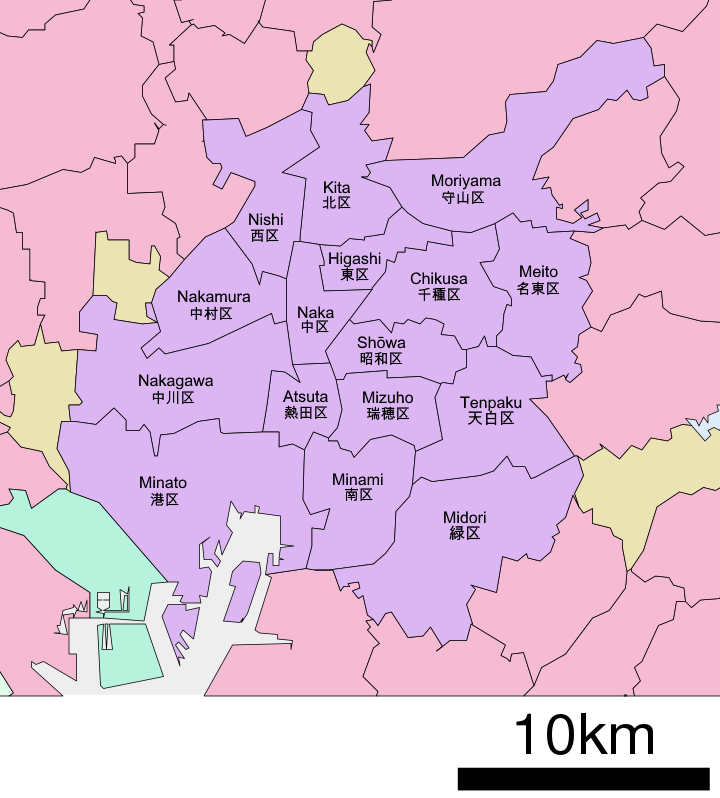
~~~~~~~~~~~~~~~~~~~~~~~~~~~~~~~~~~~~~~~~~~~~~~~~~~~~~~~~~~~~~~~~~~
March 20th, 2022
Once again my jet-lag has made me miss my posting time, but this just means that you intrepid readers get the luxury of two posts in one day. To it, let’s take the next few days to learn a little about Japan’s prefecture system, as it will be essential to talking about the political geography of Japan in any meaningful way.
Japan is divided into 47 prefectures, which can be thought of as similar to states in America. Prefectures are the largest division of government in Japan, but the lines between prefectures also serve to highlight each region’s distinct culture, as well as corral their often titular major city.
Technically speaking, there are only 43 proper prefectures (ending with the “ken” suffix, 県), with Osaka and Kyoto instead being designated as “urban prefectures” (ending with the “fu” suffix, 府), Hokkaido being a “circuit” (ending with the “dou” suffix, 道) and Tokyo designated as a “metropolis” (ending with the “to” suffix, 都). HOWEVER, for shorthand they are just called prefectures in English, and in Japanese they are collectively referred to by the portmanteau “todoufuken” (都道府県, notice that the word is composed of each of the four kanji aforementioned).
The reason for these suffixes is to differentiate the name of a prefecture from its city. If somebody told you that they live in Gifu City (Gifu-shi, 岐阜市), you would know from the “shi” suffix that they don’t merely live in Gifu prefecture (Gifu-ken, 岐阜県) in a city or town other than Gifu-shi. Think of it as the difference between living in Kansas City or just Kansas.
In the map below, the prefectures are grouped into larger regions, but the purposes of these are more colloquial and do not indicate a division of government. One might say that they live in the "Tohoku region," rather than just "Aomori," e.g. The reason for this will become more apparent the more we discuss scale in Japanese geography, which we will cover sometime in the next few days.
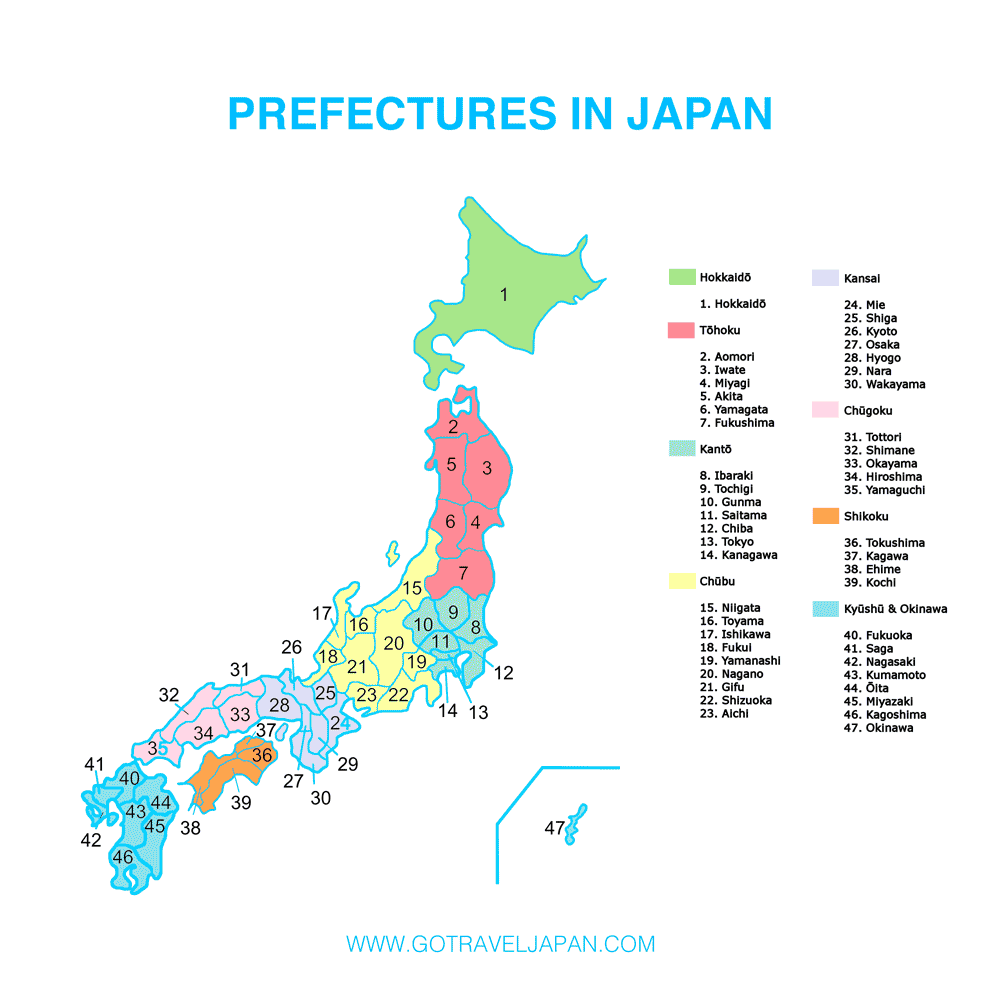
~~~~~~~~~~~~~~~~~~~~~~~~~~~~~~~~~~~~~~~~~~~~~~~~~~~~~~~~~~~~~
March 19th, 2022
While I had every intention today of teaching you the aesthetic wonders of Japan and using this post to praise their social advancements, my jet-lag has delayed me. My tardiness means that I must hurriedly pen something on a subject to which I am already knowledgeable and that requires no research: TOILETS.
Yes, much fuss has been made of Japanese toilets, and in fact whole books could be written about the nuances of the Japanese bathroom (and trust me, I will). Today, however, I simply want to illuminate an aspect of toilet usage that is mired in obscurity for many Americans; the bidet.
I will not mince words. A bidet (bih-DAY) is a nozzle inside of a toilet that squirts a concentrated stream of water into your nether regions. While common in Europe and Asia, these are almost non-existent in America (this is why we panic about toilet paper running out--we have no alternative!), so their presence in Japan is the butt of the joke (pun intended) for many blogging and vlogging expat yucksters.
I will admit that the feeling of a bidet is something to get used to. For a people as finicky and particular as the Japanese, it strikes me as an unusually invasive and even violent way to clean one’s self. Still, its effectiveness perhaps outweighs the cons.
My main reason for writing on this subject, however, was to make light of how incredibly complex our hotel room makes the bidet look. No, seriously, just look at this wall of text:
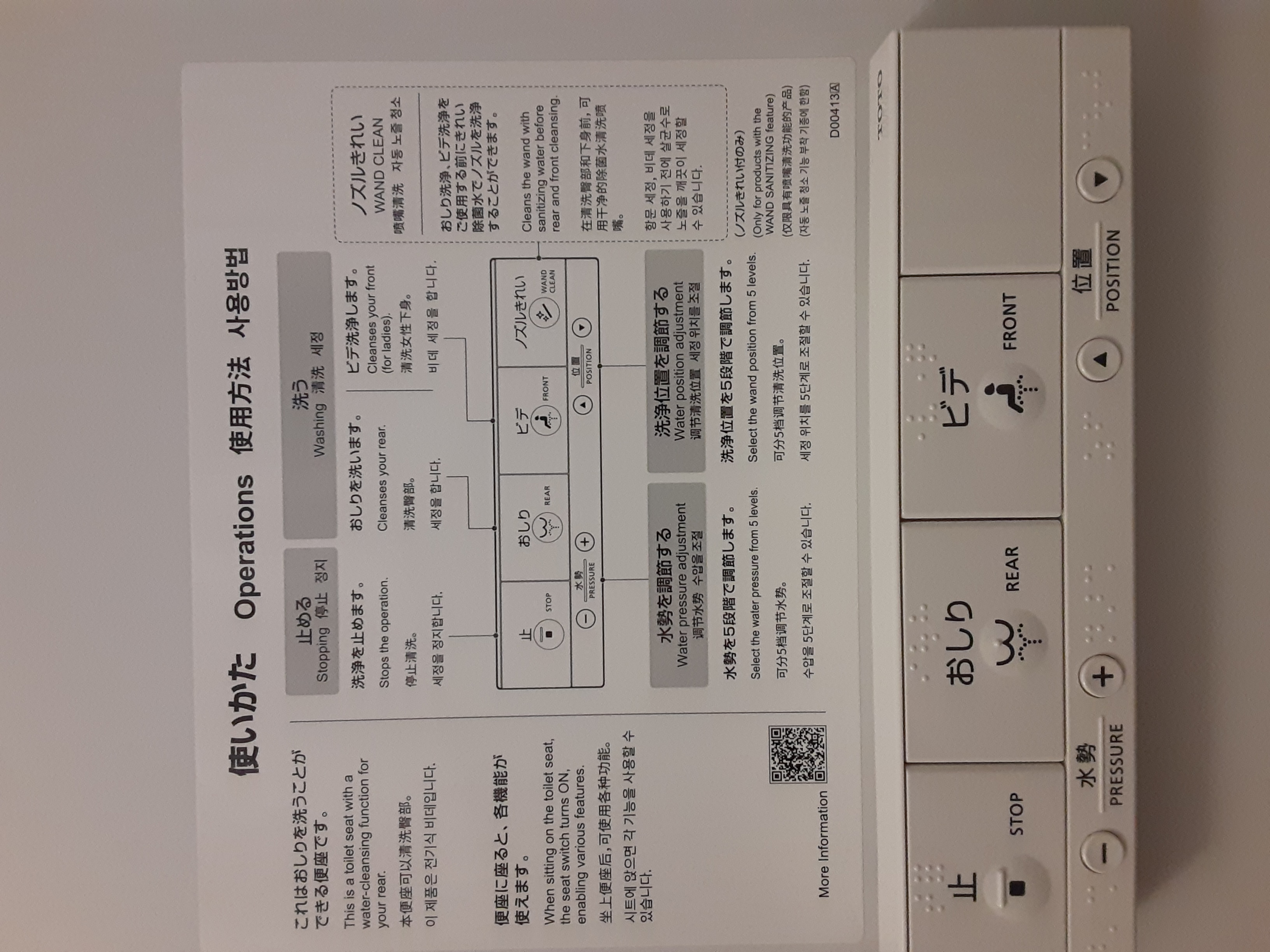
For goodness’ sake! Am I washing my rear or disassembling an airplane engine?! And if that’s not enough, get a load of this in the bottom left-hand corner:
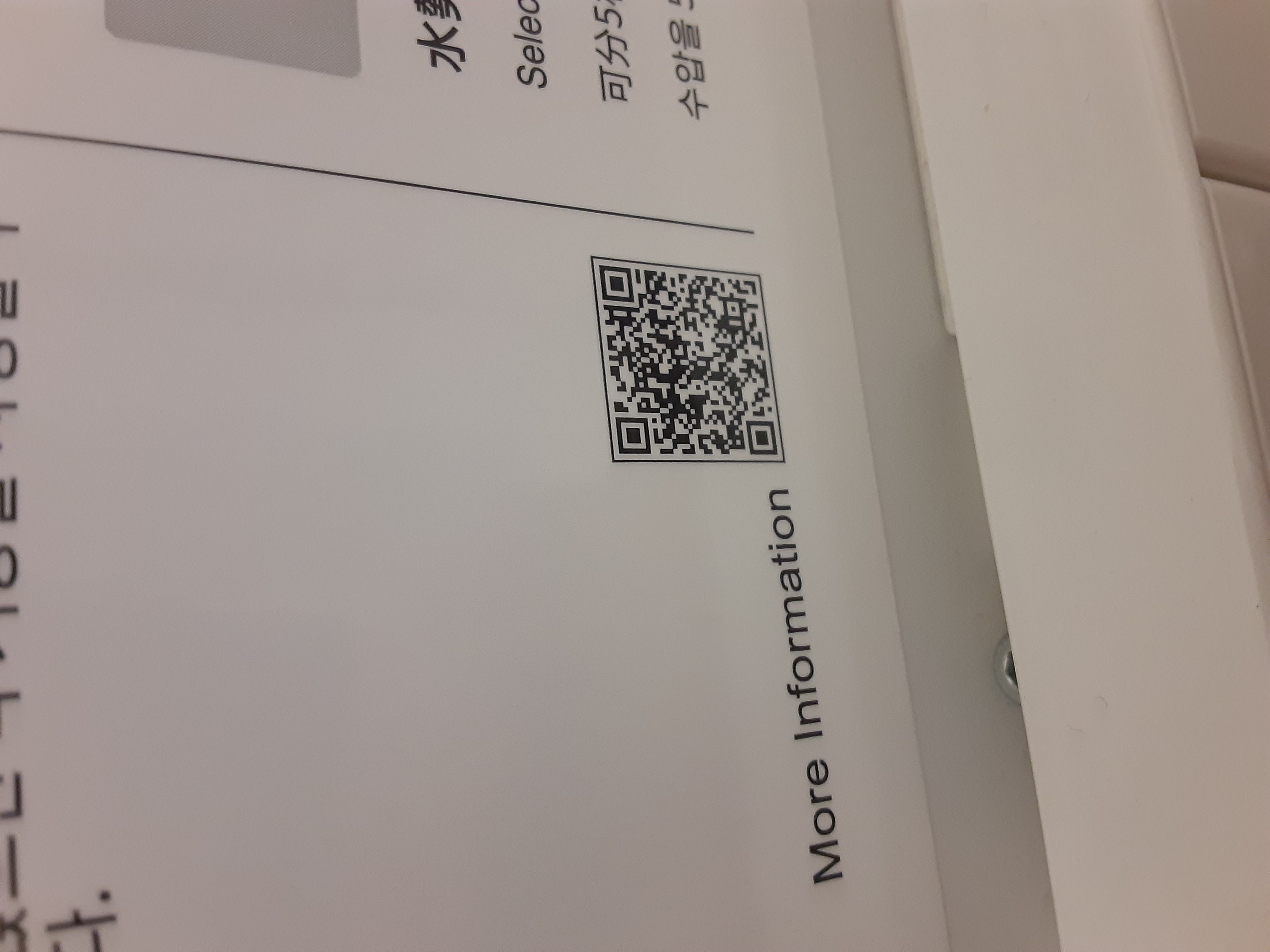
MORE information?! I feel exhausted just reading the prologue! Of course I scanned the QR, but it led to a dead link, so I can only reach one of two conclusions: Either the “more information” is a joke from a bored technical writer, or the company that made this is simply unable to afford the MASSIVE servers required to host the petabytes of information they have cataloged on the usage of bidets.
For the record, you just press the button with the little tush, and then press the button to the left of it when you’re done.
~~~~~~~~~~~~~~~~~~~~~~~~~~~~~~~~~~~~~~~~~~~~~~~~~~~~~~~~~~~~~~~~~~~~
March 18th, 2022
Hello! My original inaugural post for this blog has been accidentally marooned in the purgatory of forgotten passwords that is my mind, so I’ll be writing this one from scratch.
While this blog is more about Japan than myself, I must explain my situation: Currently, I’m over 6,000 miles away from my hometown, sitting inside of a shipping container in the pouring rain, eating peanut butter straight from the jar with a plastic spoon. In the words of David Byrne: Well, how did I get here?
Yes, if you’re reading this blog, chances are you’re a friend or family member and you know exactly why the aforementioned is the case, but in case you aren’t one of the lucky few who call themselves a Walker, I’ll explain:
I have made the leap to move to Japan with my wife for two years. The reason for which will be elaborated on in later posts no doubt, and herein I am more interested in getting you up to speed with exactly what that entailed. In reading this blog, you shall immerse yourself, as I have, head first into the unheated swimming pool of Japanese culture, the good and the bad; the fancy toilets and the high taxes, akimbo.
I don’t need to tell you that and why the whole world went to hell in a hand-basket over a certain nameless pathogen, and as a result, our slated departure of November 2021 ended up turning into March 2022. 仕様が無い, as the Japanese would say. This fact belies (or perhaps makes more evident) the simple truth that the Japanese are masters of paperwork, red-tape, bureaucracy, and otherwise conjuring requisites out of thin air. Here’s what it took for us to make the leap:
First, we had to procure jobs in Japan from the outset. Tourism is still not allowed from foreign countries for the time being, as they are only accepting business and student-related visas. Therefore, we had to apply for a COE (Certificate of Eligibility), which is basically a piece of paper proving that we have a reason to enter Japan in the first place. Then we had to obtain an International Driver’s Permit from our local AAA. After that, we begun the process of obtaining our visas, which involved some dozen forms we had to mail to our consulate. Once that was returned to us, we required a check for said nameless pathogen to be carried out 72 hours before our flight. Badda bing, badda boom, we were on our way to Nippon.
Oh, you thought I was done? After a 17 hour series of flights, we disembarked from our plane to be corralled into one of several waiting rooms, hopping from numbered seat to numbered seat for about an hour in order to await further nameless pathogen testing. After the world’s most boring game of musical chairs, we had to spit into a tube, wait about two more hours, present various sheets of paper to a dozen or so different kiosks, get our IDs printed, and catch a taxi to our hotel, finally resting after 30 sleepless hours.
Oh, you thought I was done, done?? Now we are in day one (of seven) of our quarantine, and have to stay indoors all day subsisting on whatever food we brought from home (more on that some other day) for the time being. Every day, we will receive a phone call at a random time from the HCO (a governing body for disease-ridden expats) in order to make sure that we are indeed where we promised we would be in our written pledge to the government. After this is over, we’re free to go. It’s basically like being under house arrest, or going to prison for triple homicide in Sweden.
Many other Americans are going through the same procedure as of now, and given their correspondences online, I think many of them were completely unprepared for how much planning such a series of hurdles would entail. For one, many of them openly admit to leaving the quarantine location without permission for food purposes (which is tacitly encouraged by the Japanese government anyway).
Much of this is merely security theater--a comforting fib to soothe the worries of the public, something which does not actually accomplish anything in the way of tangible, practical safety regarding the nameless pathogen or its proliferation. For one, the majority of the required documents that we submitted to the government look like the easiest thing on God’s green earth to forge, and it is a trivial matter to circumnavigate the security measures in place during one’s quarantine (not that I would, I signed that pledge and I’m no liar).
Still, you have to hand it to the Japanese in one aspect of all this hullabaloo: they definitely make living in Japan a precious object of desire. Don’t get me wrong, living here IS great, and I am thankful for the opportunity to stay, even with all said trouble; but even if living in Japan wasn’t all it’s cracked up to be, they certainly make you feel like it’s something worth working towards, and will NOT let you into their secret club unless you play ball with how THEY do things. In all honesty, I think that’s admirable! I wish America would adopt the same policy: “We’re great, so be American or get the hell out!” rather than our current policy of letting anyone with a pulse and two brain cells immigrate with the rapidity of Usain Bolt on an automated airport walkway.
One’s greatest strength is also their greatest weakness, and Japan’s bureaucracy is adjacent to its refreshing sense of order and discipline, i.e.
I digress. You’re probably still curious about that shipping container bit at the start, eh? Well, our quarantine location just happens to be a hotel wherein the rooms are converted shipping containers. Pretty neat, huh? It’s quite fancy as well, and they graciously provided us with more microwavable meals than we could carry, literally.
All in all, I’m feeling blessed, despite my grumblings. Besides, the more time I have in dual confinement, the more time I have to study my language skills, which are in dire need of some sharpening...

